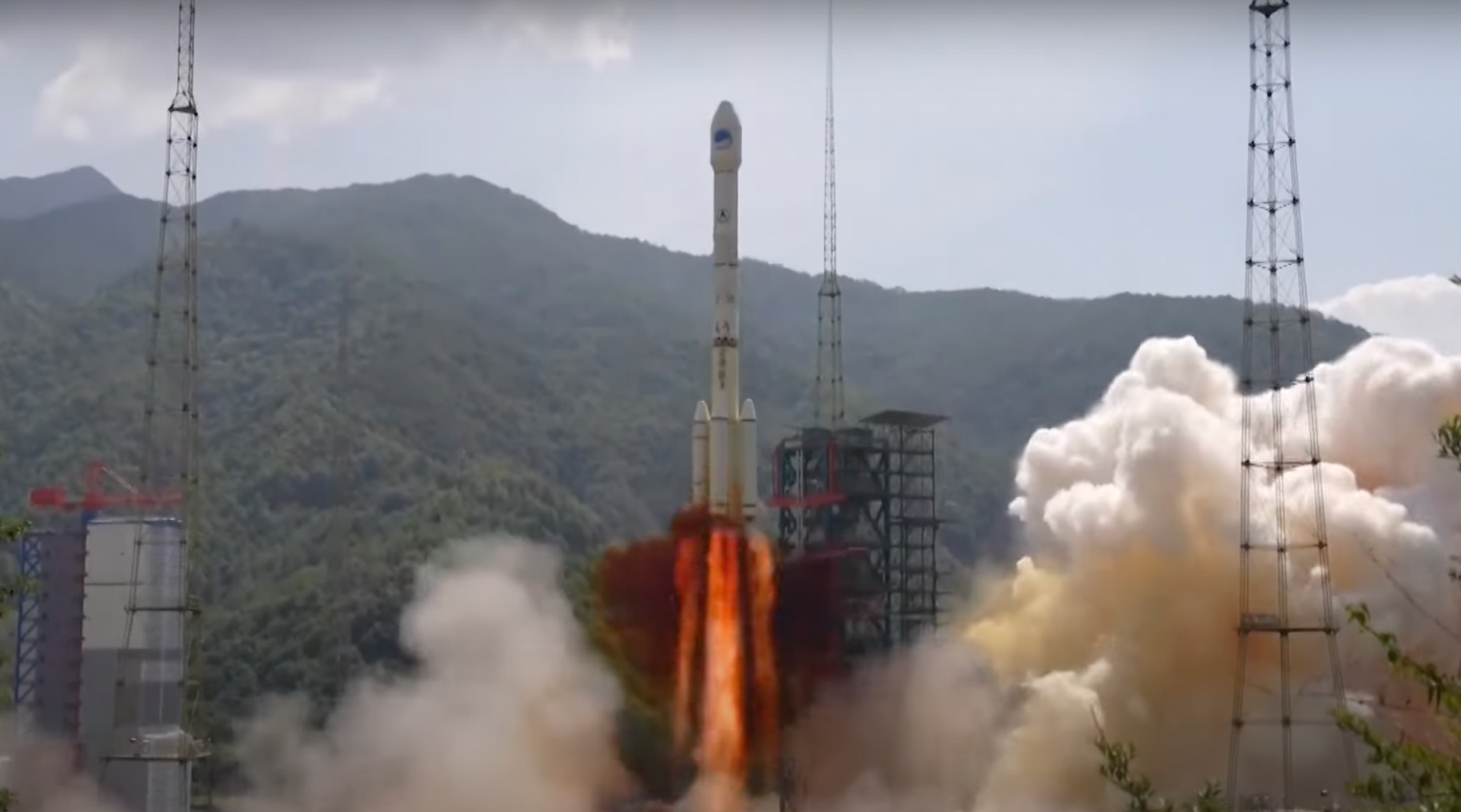China launched a satellite for its BeiDou navigation system system on Tuesday night (May 16), the first time it had done so in nearly three years.
The BeiDou satellite lifted off atop a Long March 3B rocket from Xichang Satellite Launch Center, in southwest China's Sichuan Province, on Tuesday at 10:49 p.m. EDT (0249 GMT and 10:49 a.m. local time on May 17).
The spacecraft is the 56th BeiDou satellite China has lofted to date, and the first to take flight since June 2020.
Related: The latest news about China's space program

The newly launched satellite is bound for geostationary orbit, about 22,200 miles (35,700 kilometers) above Earth.
Once it's up there and fully checked out, the spacecraft will serve as the first-ever backup for the BeiDou-3 Navigation Satellite System (BDS-3), according to China's state-run Xinhua news service.
"The satellite will expand the communication capacity of the system's regional short-messaging function, enhance positioning accuracy and promote the network's availability and stability," Xinhua wrote on Wednesday.
Get the Space.com Newsletter
Breaking space news, the latest updates on rocket launches, skywatching events and more!
BDS-3 came online in July 2020, making China the third country, after the United States and Russia, to have its own independent satellite-navigation system. (China began launching BeiDou satellites in 2000, but the constellation didn't achieve full operational capability until BDS-3.)
Tuesday night's launch is part of a busy year for China, which has been ramping up its spaceflight activities and capabilities for the last decade or so. The nation plans to launch more than 200 spacecraft on at least 60 launches during 2023, and private companies based in the country could add more than 20 missions to that total.
Join our Space Forums to keep talking space on the latest missions, night sky and more! And if you have a news tip, correction or comment, let us know at: community@space.com.

Michael Wall is a Senior Space Writer with Space.com and joined the team in 2010. He primarily covers exoplanets, spaceflight and military space, but has been known to dabble in the space art beat. His book about the search for alien life, "Out There," was published on Nov. 13, 2018. Before becoming a science writer, Michael worked as a herpetologist and wildlife biologist. He has a Ph.D. in evolutionary biology from the University of Sydney, Australia, a bachelor's degree from the University of Arizona, and a graduate certificate in science writing from the University of California, Santa Cruz. To find out what his latest project is, you can follow Michael on Twitter.









